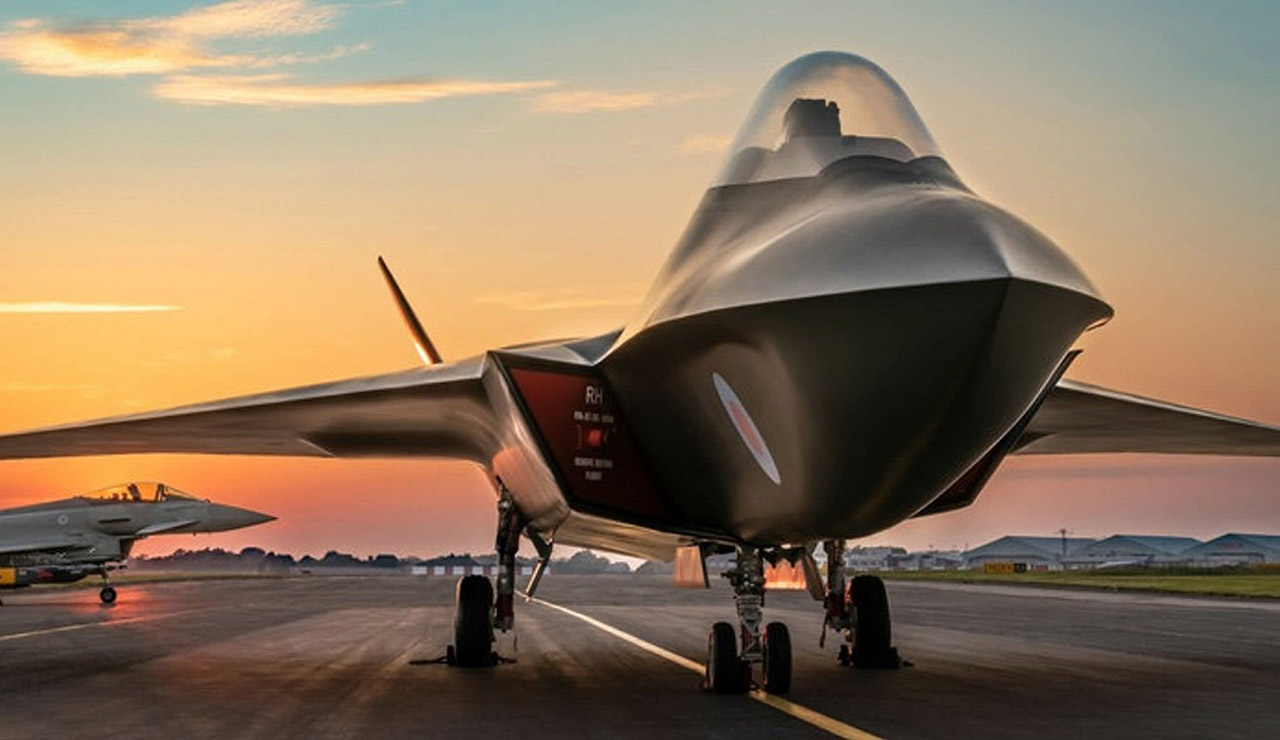As a host of nations vie to join the next-generation fighter development program, Italy has indicated that, along with Japan and Britain, the partner nations may eventually welcome other governments that aim to produce an advanced fighter jet.
Italian Defense Minister Guido Crosetto stated this in an interview with the Italian daily Il Corriere della Sera. The announcement comes a month after Italy, the United Kingdom, and Japan signed an agreement to establish the Global Combat Air Program (GCAP).
This first-of-its-kind significant defense sector partnership unites their disparate next-generation fighter programs.
Guido Crosetto told Il Corriere della Sera, “We will not open (the program) to others until the initial phase will be closed.” He said several countries were interested in participating but did not specifically address questions about interest from Saudi Arabia and the United Arab Emirates.
“Afterward, with everyone’s agreement, we could widen it to other countries,” Crosetto added. However, Japan and the United Kingdom, the two other participants, have not commented on the admission of new states into the program since the pact was signed.
Last year in September, resource-rich Saudi Arabia expressed interest in jointly developing the 6th-gen fighter jet with the United Kingdom. At the time, reports indicated the UK was considering Saudi Arabia’s request to participate in the next-generation fighter jet project.
According to a recent Reuters article, Saudi Arabia was mentioned as a potential junior partner for the GCAP. The country would contribute financial resources and access to a lucrative market to the project, which is anticipated to require tens of billions of Euros.
However, concerns have persisted about Saudi Arabia’s patchy record on human rights, which includes the deaths of civilians as a result of its engagement in the civil war in Yemen, impeding its admission into a formal grouping. On top of that, the Saudi kingdom also has close ties with China, which could be a dealbreaker for the three members of the GCAP.
When inquired about Saudi Arabia’s possible participation in the development of a next-generation aircraft program led by the United Kingdom, Richard Berthon, the British Ministry of Defense director of future combat air, said in September: “The current status is that we are exploring possibilities, but no decisions have been made.”
Regarding expanding GCAP, “We have been working with our Italian and Japanese partners to define for ourselves the sorts of partners that we might want to bring into the program, what we want from them, and who they might be,” Berthon said.
Sweden had shown interest in joining the GCAP grouping in March 2023. However, it dropped out by November.
Defense aerospace journalist Gareth Jennings posted on X (formerly Twitter) on November 7: “Sweden confirms that involvement in Tempest is now officially dead. ‘We walked away from tri-lateral studies with the UK and Italy about a year ago and launched a national study. I will not answer questions about why it didn’t work with the UK and FCAS.’ – official.” Tempest is the name of the UK’s former next-generation fighter program, which has now merged into the GCAP.
GCAP’s Fighter Jet Is Taking Shape!
In December 2022, the Global Combat Air Programme (GCAP) was initiated as a public-private cooperation. The project involves Japan’s Mitsubishi Heavy Industries, Italy’s Leonardo, and Britain’s BAE Systems.
The program is scheduled to begin development in 2025, with delivery to begin a full ten years later in 2035. According to the press release, an Italian official will be appointed as the first head of a distinct “joint business construct” with its headquarters in the UK, and a Japanese official will manage the program as its first chief executive officer.
To increase its capabilities, the aircraft will be equipped with cutting-edge data systems, lethal armaments, sophisticated sensors, and unmanned planes. It will replace Japan’s F-2s and the UK’s Typhoon fighter aircraft. After World War II, it was one of Japan’s most important defense programs. Engineers recently hired from Japan have begun work on the fighter jet’s engine.
The signing of a convention in Tokyo by the defense ministers of participating countries contemplates the creation of the GCAP International Government Organization (GIGO). In addition to delivering a next-generation fighter aircraft by 2035, this organization will “lay a solid basis for further enhancing the defense industrial base of each country.”

Made up of government representatives from all three countries, GIGO will specify the overall capabilities required for the aircraft and oversee a cooperative business construct (the industry equivalent of GIGO, which is expected to be led by Leonardo in Italy, Mitsubishi Heavy Industries (MHI) in Japan, and BAE Systems in Britain) that will be in charge of making sure those needs are satisfied in a timely and cost-effective manner.
The first CEO of this newly constituted organization will be from Japan. Apart from furnishing critical military capabilities, the headquarters will optimize economic gains and enhance every country’s industrial potential for combat aircraft. The agreement that all three countries signed is still awaiting confirmation by their respective parliament.
According to the British statement, this combat air vehicle will use state-of-the-art technologies to place it among the world’s most advanced, adaptable, interoperable, and networked fighter jets. The release said the supersonic stealth aircraft will have a tactical advantage over adversaries in war thanks to a radar that can capture 10,000 times more data than current systems.
The deal, reached a year after the countries agreed to pool their resources to produce next-generation fighter jets, illustrates the kind of collaboration the British government is trying to build following its departure from the European Union. It also indicates that Britain is eager to grow in the Indo-Pacific area with allies like the US and France.
Adding more countries as junior partners that bring considerable resources could be profitable for the GCAP program. However, it could be a long and treacherous process with all partners agreeing to the arrangement.
- Contact the author at Sakshi.tiwari9555(at)gmail.com
- Follow EurAsian Times on Google News




